#tc campbell
Explore tagged Tumblr posts
Text



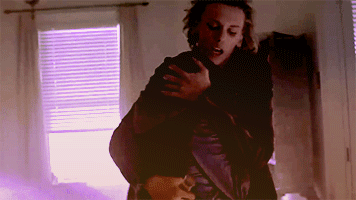
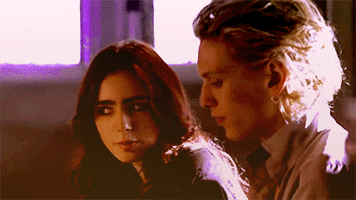
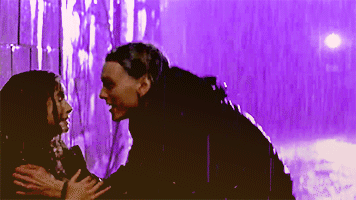
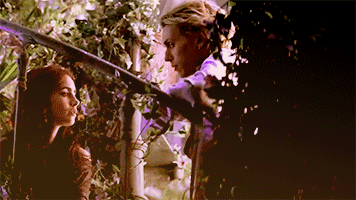
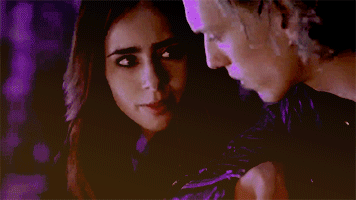
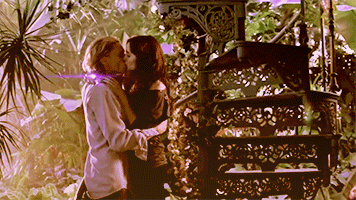


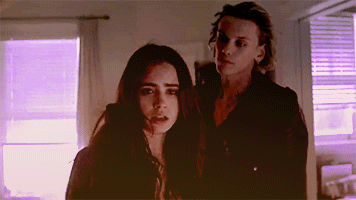
“Kiss me,” she pleaded, and he did, hot languorous slow kisses that sped up as his heartbeat did, as the movement of their bodies quickened against each other. Each kiss was different, each rising higher and higher like a spark as a fire grew: quick soft kisses that told her he loved her, long slow worshipful kisses that said that he trusted her, playful light kisses that said that he still had hope, adoring kisses that said he had faith in her as he did in no one else. Clary abandoned herself to the kisses, the language of them, the wordless speech that passed between the two of them.”
@rinadragomir
#clace#claceedit#my gif#my gifs#lily collins#jamie campbell bower#mortal instruments#tmi#cassandra clare#cassie clare#the shadowhunter chronicles#tsc#tcs creators
122 notes
·
View notes
Text
Life Is Strange Before The Storm fancast
My Life Is Strange fancast
LIS 2 fancast
LIS TC Fancast
Sophie Thatcher as Chloe Price

Sydney Sweeney as Rachel Amber

Austin Abrams as Nathan Prescott
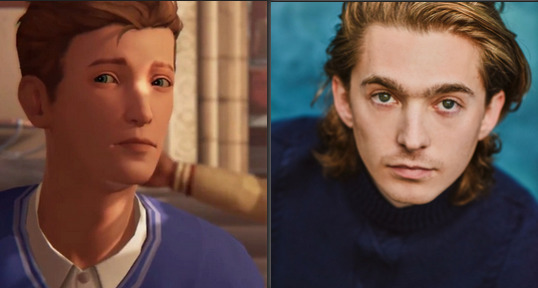
Reneé Rap as Victoria Chase

Carson Rowland as Eliot Hampden
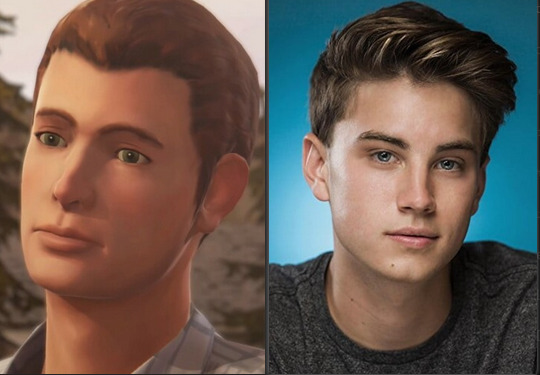
Kaitlyn Dever as Steph Gingrich

Shameik Moore as Drew North

Miles Brown as Mikey North
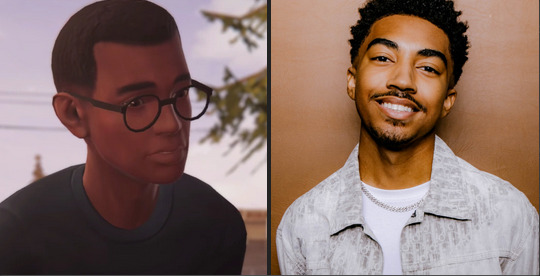
Angourie Rice as Samantha Myers

Aaron Eckhart as William Price
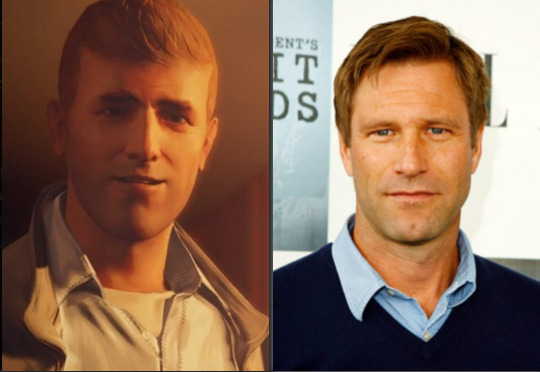
Robin Wright as Joyce Price

David Harbour as David Madsen

Ving Rhames as Principal Raymond Wells

Yvette Nicole Brown as Michelle Grant

Douglas M. Griffin as Samuel Taylor

Mischa Collins as Skip Matthews

Mark Hamill as Travis Keaton
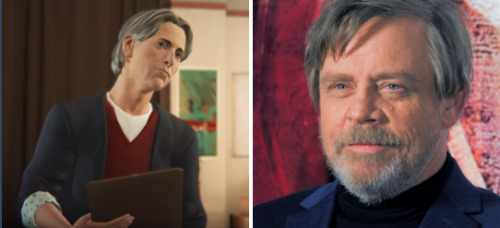
Norman Reedus as Frank Bowers
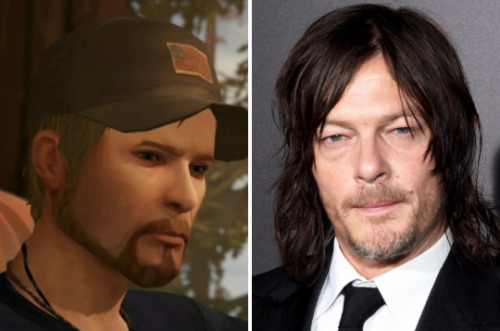
Bryan Cranston as Sean Prescott

Jon Hamm as James Amber

Neve Campbell as Rose Amber
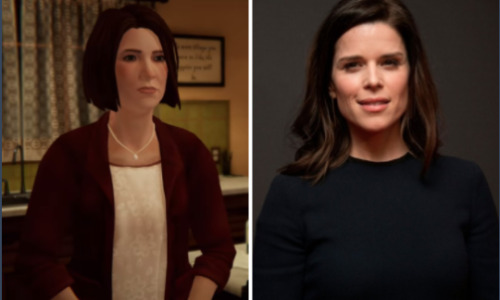
Rosamund Pike as Sera Gearhardt

Jon Bernthal as Damon Merrick
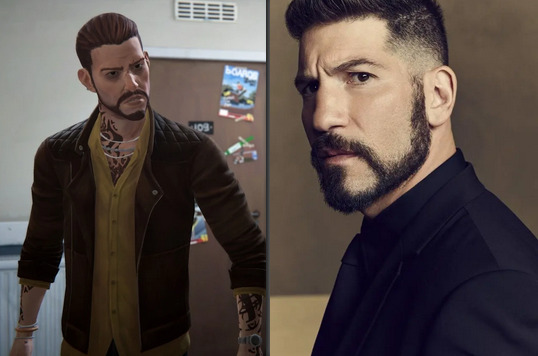
#Life Is Strange#Life Is Strange Before The Storm#Fancasts#Chloe Price#Rachel Amber#Amberprice#Steph Gingrich#Mikey North#Drew North#Samantha Myers#Nathan Prescott#Victoria Chase#Frank Bowers#Damon Merrick#Eliot Hampden#Joyce Price#William Price#David Madsen#James Amber#Rose Amber#Sera Gearhardt#Sean Prescott
13 notes
·
View notes
Text
Tata Group Stocks Dip Up to 2% After Air India Crash Claims 241 Lives
Tata Group stocks witnessed a sharp decline in Friday’s trading session following the tragic crash of an Air India flight from Ahmedabad to London, which claimed the lives of 241 passengers. The incident, marking the first fatal hull loss of a Boeing 787 since its commercial debut, has triggered global scrutiny and impacted investor sentiment.

On the Bombay Stock Exchange (BSE), several Tata Group entities recorded losses of up to 2%. Among the biggest laggards were Tata Technologies and Trent, which dropped between 2% to 2.6%. Other major Tata stocks, including Tata Power, Tata Consumer, Tata Steel, and Tata Consultancy Services (TCS), shed between 1% to 1.5%. Indian Hotels Company Ltd also declined over 1.5%, trading at ₹733.10 apiece.
In contrast, Tata Coffee and Rallis India emerged as the only gainers in the Tata portfolio. Tata Coffee surged over 4% to ₹344.80, while Rallis India edged up by 0.50% to ₹309.70 on the NSE.
The sell-off followed a similar downward trend observed on Thursday, immediately after the crash made headlines. Market analysts attributed the dip to a combination of broader weak market cues and the psychological impact of the aviation tragedy on Tata-owned Air India.
Investigation Underway
The crash has drawn attention from India’s Directorate General of Civil Aviation (DGCA), with additional involvement from U.S. transportation investigators and Boeing engineers. This incident has raised fresh questions about the safety of the Boeing 787 Dreamliner, despite its long-standing reputation for technological advancement and fuel efficiency.
Tata Group Responds to Crisis
In an official statement, Air India’s CEO and Managing Director, Campbell Wilson, confirmed that the airline is working closely with regulatory bodies and emergency services to support the response efforts.
Tata Sons Chairman N Chandrasekaran expressed deep sorrow over the loss and announced a series of support measures for victims and their families.
“No words can adequately express the grief we feel at this moment. Our thoughts and prayers are with the families who have lost their loved ones and with those who have been injured,” he said.
Chandrasekaran further confirmed that the Tata Group would provide ₹1 crore in financial compensation to each family that lost a loved one in the crash. The conglomerate will also cover all medical expenses for the injured and support the reconstruction of the BJ Medical Hostel, which sustained damage during the incident.
“We remain steadfast in standing with the affected families and communities during this unimaginable time,” he added.
The Air India crash has cast a shadow over the Tata Group’s aviation ambitions and prompted fresh scrutiny of Boeing’s safety standards, just as Indian carriers continue to place massive orders for new aircraft.
#Air India crash#Tata Group stocks#Tata Technologies#Trent shares fall#Boeing 787 crash#Indian stock market#Air India tragedy#Tata stock decline#Tata Sons#N Chandrasekaran
0 notes
Text
Untangling Andy Warhol
The Pop iconoclast obsessively documented his life, but he also lied constantly, almost recreationally.
By Joan Acocella June 1, 2020

Warhol would tell interviewers to talk to his assistant: “He did a lot of my paintings.”Photograph by Stephen Shore / Courtesy 303 Gallery
Andy Warhol’s life may be better documented than that of any other artist in the history of the world. That is because, every few days or so, he would sweep all the stuff on his desk into a storage box, date it, label it “TC”—short for “time capsule”—and then store it, with all the preceding TCs, in a special place in his studio. As a result, we have his movie-ticket stubs, his newspaper clippings, his cowboy boots, his wigs, his collection of dental molds, his collection of pornography, the countless Polaroids he took of the people at the countless parties he went to—you name it. We have copies of bills he sent and also of bills he received from increasingly exasperated creditors, including one (“pay up you blowhard”) from Giuseppe Rossi, the doctor who, in 1968, saved his life after a woman who felt she had been insufficiently featured in his movies came to his studio one day and shot him. In one box, I’ve heard, there is also a slice of cake, on a plate. It wasn’t just material objects he kept. When possible, he taped his phone conversations, and sometimes had an assistant type them up. He believed in the power of the banal. This faith was the wellspring of the Pop-art paintings—the Campbell’s soup cans, the Brillo cartons—that made him famous in the nineteen-sixties and changed America’s taste in art.
After Warhol’s death, in 1987, a museum dedicated to his work was established in his home town, Pittsburgh. The time capsules—six hundred and ten of them—were shipped there and lined up on banks of metal shelving, ready for the person who would work their contents into a fittingly rich biography. Seven years ago, he arrived: Blake Gopnik, formerly the lead art critic of the Washington Post. (His brother, Adam, is a writer for this magazine.) Gopnik is fantastically thorough; the book is nine hundred pages long—not counting the seven thousand endnotes, available in the e-book edition or online. But you don’t lose heart, because Gopnik is a vivid chronicler. Here is a small clip from his description of the repair job Dr. Rossi did on Warhol’s innards after the 1968 shooting. The surgeon found
two holes in the arc of the diaphragm muscle, pierced both right and left as the bullet crossed through Warhol’s body; an esophagus severed from the stomach, so that food and gastric acid were spilling out from below; a liver whose left lobe was mashed and bleeding and a spleen utterly destroyed and spilling more blood than any of the other organs. [The] bullet had also cut a ragged hole in Warhol’s intestines, releasing feces and upping the chances of fatal infection.
Reading this, I felt as though I were having the operation myself.
Warhol was born in Pittsburgh in 1928, the youngest of the three sons of Andrej and Julia Warhola, who had immigrated to the United States from a small village in what is now Slovakia. The townsfolk were Carpatho-Rusyns, a Slavic people, and the family was Byzantine Catholic. (Warhol, as an adult, sporadically went to Mass. “Church is a fun place to go,” he said.) Slavs were much in demand in Pittsburgh, with its steel mills, because they were reputedly willing to do any kind of work, at any wage. As a result, they were also the most looked-down-upon ethnic group in the city. Andrej was a manual laborer; Julia a domestic. When she didn’t have enough work, she went door to door, often with her sons in tow, selling decorative flowers made from cut-up peach cans. Andrej died in 1942. The two older boys quit school and took full-time jobs. Andy stayed in school. For most of his youth, he was cosseted by his family. When the Warhols acquired a new Baby Brownie Special camera ($1.25), he immediately laid hands on it, and never let it go. His brothers built him a darkroom in the basement. Also, he fell in love with the movies; he said that he wanted to make his living showing films. This was an unusual life plan for a boy of his background, but Julia saved nine dollars—nine days’ wages from her housecleaning—to buy him a projector. He showed Mickey Mouse cartoons on a wall in the apartment.
Warhol liked to describe himself as self-educated, a widely accepted claim. In fact, he went to an excellent art college, the Carnegie Institute of Technology, where a number of his teachers recognized his gifts and kept the work that he turned in to them, a rare tribute. The minute he got out of school, in 1949, he packed his belongings in a paper bag and got on an overnight Greyhound bound for New York City. He was twenty.
Warhol lived in a series of roach-ridden sublets, usually shares, while trying to break into commercial illustration. Once, when he was showing samples of his work to the editor-in-chief of Harper’s Bazaar, an insect crawled out of his portfolio, to his mortification. The editor felt so sorry for him that she gave him an assignment. Warhol was not shy. In the Museum of Modern Art, he went up to a staffer and proposed that he design Christmas cards for the gift shop. (He got the job.) A friend remembered seeing him in a bookstore, flipping through the record bins to see which labels were doing the most interesting jackets. Then he went home and cold-called the art directors. “He was like a little Czech tank,” another friend said.
Many people who met him in those years, and later, found him strange—a “weird little creep,” in the words of one. He was unabashedly homosexual, and in the early fifties that was weird enough. He liked to do drawings of nude boys, their nipples and crotches dotted with little hearts, like soft kisses. If he met a man who appealed to him, he might say that he liked to photograph penises, and would this man mind? “No, of course not,” one self-possessed British curator replied. “What are you going to use them for?” “Oh, I don’t know yet,” Warhol said. “I’m just taking the pictures.” The man unzipped.
Three years after Warhol arrived in New York, his mother turned up on his doorstep. She explained to one of his friends, “I come here to take care of my Andy, and when he’s okay I go home.” She stayed for almost twenty years. The household had a large, smelly collection of Siamese cats. At one point, there were reportedly seventeen of them, mostly named Sam. (But Julia, pointing, could introduce them separately: “That’s the good Sam, that’s the bad Sam, that’s the dumb Sam . . .”) Between the cats and Julia’s late-life drinking problem, Warhol seems to have been hesitant to introduce her to his friends. On the other hand, one boyfriend said he thought Warhol was grateful for her presence, because it gave him an excuse not to have sex. He would explain to his guest that he didn’t want to make any bedroom noises as long as his mother was within earshot.
Warhol claimed that he was a virgin until he was twenty-five, and some people would say that that was no surprise. All his life, he was pained by his looks. He was cursed with terrible skin, not just acne but what seems to have been a disorder of pigment distribution, so that his complexion was lighter here, darker there. He also had a bulbous nose, or so he thought, and he got a nose job. By the time he was in his thirties, he had lost much of his hair. Thereafter, he glued a toupee to his scalp every morning. His most celebrated wig was a silver one, which he usually wore with a fringe of his brown hair peeping out at the neck. These difficulties boded ill for his sex life, and he was widely said to be lousy in bed. He thought sex was “messy and distasteful,” a friend reported. He’d do it with you once or twice, and that was it. Gopnik, as is his practice, also gives competing evidence: “Within a few years Warhol was having surgery for anal warts and a tear, and a decade later he was taking penicillin for a venereal disease.” Warhol’s friend and collaborator Taylor Mead said that Warhol “blows like crazy.”
Warhol lied constantly, almost recreationally. He lied about his age even to his doctor. He told Who’s Who that he was born in Cleveland, to the “von Warhol” family. (He had traded in Warhola for Warhol soon after arriving in New York.) He adopted a gentle, whispery voice, into which he might then drop a little grenade. If someone asked how he was, he might say, “I’m okay,” and then, coming closer, he would add, “But I have diarrhea.” Some people thought he was stupid. Not those who knew him well. “Warhol only plays dumb,” a friend said. “He’s incredibly analytical, intellectual, and perceptive.”
His commercial specialty was drawings for women’s-wear ads—above all, shoes. In 1955, the high-end women’s shoemaker I. Miller gave him a contract for a minimum of twelve thousand dollars’ worth of work per year, a lot of money at the time. He also did window dressing, notably for Bonwit Teller. But already he was looking beyond this: he wanted to be a gallery artist. Teachers and classmates from Carnegie Tech provided some connections, and Manhattan’s gay community supplied more. He also had a few special godfathers, attracted to him, it seems, by his charm (not everybody thought he was creepy) and by his drive. Perhaps his most important guide was Emile de Antonio, an artists’ agent, who introduced him all around; he knew John Cage, whom Warhol revered, and lots of collectors. (“I gave a little party for a terribly rich woman I knew,” de Antonio recalled, “and I served just marijuana and Dom Perignon, and Andy did a beautiful menu in French.”) Another useful person was Ivan Karp, the director of the Leo Castelli Gallery, Manhattan’s most prestigious art mart. Through Karp, Warhol eventually met Henry Geldzahler, a curatorial assistant at the Metropolitan Museum, whose job there was to find out who the hot new artists were and tell the curators.
In the fifties, the United States already had a pocket of conceptual art, but the star painters were the Abstract Expressionists, above all Jackson Pollockand Willem de Kooning, with their effortful drips and impastos. At the Ab Exes’ heels were the young Robert Rauschenberg and Jasper Johns, part conceptual, part painterly, and edging into “Pop,” a style that used imagery from mass culture—comic strips, movies, advertising—and adopted a light, playful tone, the very opposite of the Abstract Expressionists’ heavy lifting. Warhol, too, was interested in this popular matter and manner, and he was annoyed that other people were, as he saw it, stealing a march on him. According to a famous story, he was complaining about this to friends one night and asked if anyone could think of pop-culture images that no one else had used. A decorator named Muriel Latow said she had a suggestion, but she wanted fifty dollars, up front, before she would reveal it. The unembarrassable Warhol sat down and wrote a check. Then Latow said, “You’ve got to find something that’s recognizable to almost everybody . . . something like a can of Campbell’s Soup.”
Gopnik calls this Warhol’s “eureka moment,” and it is typical of the book’s sophistication that the crucial, seedling idea of Warhol’s Pop art should be attributed, without apology, to someone other than Warhol. Often, artists who are praised for birthing a new trend are not the actual originators but the ones who made the trend appealing to a large public. Warhol had as much of the latter gift as of the former; Gopnik calls him “the Great Sponge.” In any case, the day after Latow shared with him her little brain bomb, Warhol (or his mother, in another version) went to the Finast supermarket across the street and came home with one can of every kind of Campbell’s soup on sale there. By the following year, 1962, he had produced “Campbell’s Soup Cans,” a montage of all thirty-two varieties. Today, this painting hangs in the Museum of Modern Art—“the ‘Nude Descending a Staircase’ of the Pop movement,” in the words of Henry Geldzahler. It is both a slap in the face and a great joy: so fresh, so brash, so red and white, so certain that it has covered every kind of soup in the world, from Pepper Pot to Scotch Broth.
In rapid succession, the Campbell’s Soups were followed by Warhol’s other now famous Pop paintings: “Green Coca-Cola Bottles” (1962), “192 One Dollar Bills” (1962), “Brillo Soap Pads Box” (1964), the Marilyn Monroes and Elizabeth Taylors and Marlon Brandos and Elvises. For some, you can easily construct a background narrative. The “Marilyn Diptych,” comprising fifty silk screens of Monroe, fading from garish color to spectral black-and-white, was exhibited just after her death. But I see no story lurking behind the Liz Taylors or the Elvises or, for that matter, the panels of twenty-four Statues of Liberty (1962) or thirty Mona Lisas (1963). All of these ladies, not to speak of Elvis and Brando, were stars, and Warhol, from his childhood until the day he died, was enthralled by celebrity.
He soon became a celebrity himself, if an unusual one. In his thirties, he was famous, in TV interviews, for putting two fingers over his lips and saying things like “er” or “um,” but not much more, as the cameras rolled. (You can see this on YouTube. It is discomforting to watch.) For live interviews, he would often bring along Gerard Malanga, who worked with him, and say, “Why don’t you ask my assistant Gerry Malanga some questions? He did a lot of my paintings.” There was some truth to this. Of the works listed above, all but the 1962 “Campbell’s Soup Cans” were silk screens, usually based on photographs that someone else had taken, and made with Malanga wielding the squeegee. From 1963 to 1972—the period during which he made most of his Pop art—Warhol produced no hand-drawn work.
Running parallel to Warhol’s iconoclasm about authorship was a certain coolness toward his subjects. “For an artist with a lifelong reputation for sucking up to stars,” Gopnik writes, “Warhol also had a lifelong knack for making art that underlined their shortcomings and hollowness.” Probably the most important discussions of Warhol’s work are the books and essays that the philosopher Arthur Danto wrote on him from the mid-sixties onward. These are not exactly art criticism. Their scope is broader. Danto says that Warhol’s work, by disposing of modernism’s assertions that painting should be about the nature of painting, liberated it to go its own way, while the art critics stayed back in the schoolroom, arguing. Danto doesn’t say he loved Warhol’s work, but I think he did. I’m sorry that he liked the Brillo carton—it supplied the title of his book “Beyond the Brillo Box”—better than the Campbell’s soup cans, but he probably enjoyed the irony that the Brillo box Warhol immortalized was designed by an Abstract Expressionist painter, James Harvey, doing a money job on the side. The Ab Exes looked upon Warhol with hatred. At a party in the late sixties, a drunken de Kooning said to Warhol, “You’re a killer of art, you’re a killer of beauty, you’re even a killer of laughter.”
Warhol didn’t kill laughter—he would have been less famous if he had done so—but his humor is muted, deadpan. In 1964, he produced a series of nine silk screens of Jacqueline Kennedy’s face, based on press photos: one that showed her in the famous pillbox hat, just before J.F.K. was shot; the second as Lyndon Johnson was being sworn in, on the airplane back to Washington; the third at Kennedy’s funeral. There was nothing overtly mocking about these works. But in 1964, when, in the public mind, Kennedy’s body was not yet cold, they raised a question: What was Warhol saying? Viewers might have asked the same of his earlier “Death and Disasters” series (1962-65), worked up from photographs of bloodied corpses hanging out of wrecked cars, mangled bodies of people who had jumped to their deaths, the electric chair in which Ethel and Julius Rosenberg, convicted of spying for the Soviet Union, were executed, and so on. Like the soup cans, the silk screens were often cheerfully multiplied and, like the Marilyns and the Liz Taylors, covered with washes of bright color: blue, red, violet, yellow.
In the same year as the “Nine Jackies,” Warhol unveiled silk screens of his “Flowers,” big, blobby hibiscus blossoms against a grassy field. They looked like wallpaper or, as Gopnik suggests, Marimekko dress fabrics. In any case, they were something that, unlike a picture of an electric chair, you might be willing to hang over your living-room sofa. This was what they were apparently designed for, because Warhol (or Malanga) turned out more than four hundred and fifty of them, in different versions—different sizes, different colorways, to use Gopnik’s inspired word—and they sold like hotcakes. Warhol claimed to be proud of them. If I’m not mistaken, Gopnik doesn’t believe him. He quotes Warhol announcing, the following year, that he has retired as an artist. The “Flowers,” Gopnik writes, were “pretty much his last notable Pop paintings.” But, as the author does not flat-out say but repeatedly implies, they were also pretty much Warhol’s last notable paintings, period. “I hate paintings,” he told a reporter in 1966, adding, “That’s why I started making movies.”
He had made his first film in 1963. Titled “Sleep,” it was five and a half hours long, and all it showed was his boyfriend, John Giorno, sleeping. The next year, he followed this up with “Empire,” eight hours, overnight, of the Empire State Building, shot from a window in the nearby Time-Life Building. Thereafter, until the mid-seventies, he made scores of movies, some of them pure and severe, like “Sleep” and “Empire,” and others, such as “The Chelsea Girls” and “Lonesome Cowboys,” shambling and funny and dirty, with drag queens sitting around licking bananas or people having dilatory conversations about sex, or having sex.
But the movies were not just movies. They were the motion-picture wing of what was by now a whole “scene.” In 1964, Warhol moved his professional headquarters into a vast space he came to call the Factory—it had housed a hat factory before he moved in—on East Forty-seventh Street, just west of the United Nations. The place was filthy, but Warhol’s friend Billy Name (né Billy Linich, but Linich was a name, right? So why not just go by Name?) moved in with a pack of fellow speed freaks and transformed the space with tinfoil and spray paint, so that in the end every surface was silver.
Just as Warhol’s movies were not merely movies, the Factory was not merely a place where things were made. It was also a showcase for a certain group of people who clustered around Warhol. Billy Name was one; Gerard Malanga another. Also important was Ondine (Robert Olivo), wild and vicious. Best known to outsiders was Edie Sedgwick, a sweet-faced and rather hapless rich girl who, in black tights and expensive sweaters, often went along on Warhol’s outings, as his “date,” and paid the tab. These and a few others were Warhol’s superstars, as he called them.
In 1966, he also became the manager of a proto-punk rock band, the Velvet Underground, hatchery of Lou Reed, John Cale, and others, all pretty much unknown at that point. One of its members described a typical show: “Some sailors or something were in the audience of five, and we played something and they said, ‘You play that again and we’ll fuck the shit out of you.’ So we played it again.” “Our aim was to upset people,” one of the band’s founders said, “make them vomit.” Warhol knew little about music, and he and the Velvets broke up in less than a year. (“Always leave them wanting less,” Warhol said.) But for a while Warhol’s film showings and performances—notably, “The Exploding Plastic Inevitable” and “★★★★”—were multimedia events, featuring the superstars bopping around in a desultory fashion to the Velvets’ discordant strains while two or more films were projected side by side or, indeed, in superimposition.
It hardly needs to be said that drugs were involved here, and this fact, augmented with reminiscences of Warhol’s associates, has contributed to a portrait of him as a sort of Mephistopheles, luring his young friends to their ruin. A key story is that of Freddy Herko, part of the West Village postmodern-dance scene in the sixties. One day, a while after he had stopped hanging around the Factory, Herko took a bubble bath, and some LSD, at a friend’s apartment, danced naked for a while, and then, to the strains of Mozart’s “Coronation Mass,” threw himself out a window. When informed of Herko’s death, Warhol commented that he was sorry not to have been there to film the fall.
This story won him an enduring reputation, with those so minded, as an emotionless person, a sort of freak—an image reinforced by his paintings of soup cans and electric chairs. Cold heart, cold art. Gopnik doesn’t say whether or not he believes the report, but he concludes that, if it is true, it says as much about Warhol’s desire to shock as about his supposed lack of feeling. He also points out that Warhol used the joke more than once. When his relationship with Edie Sedgwick was coming to an end—she ran off with Bob Dylan—he said to a friend, “When do you think Edie will commit suicide? I hope she lets us know, so we can film it.” If this was nasty, it was also clear-eyed: six years later, Sedgwick died of a barbiturate overdose. Warhol also applied the joke to himself, saying that he always regretted that no one had been there, in 1968, to film him being gunned down.
On June 3, 1968, Valerie Solanas emerged from the elevator at the Factory. She was a local eccentric, the founder and sole member of a feminist organization she called scum, the Society for Cutting Up Men. She was also, apparently, suffering from an acute mental disorder. She had previously drifted into Warhol’s studio a few times and he had put her in a sexploitation film, “I, a Man,” in 1967. She felt he should have used her more, and this was the reason for her visit. Entering the studio, she fired several times at Warhol and also put a bullet in a friend of his who was visiting. Then she turned around and stepped back into the elevator. A few hours later, in Times Square, she told a bewildered cop, “The police are looking for me. I am a flower child. He had too much control over my life.” (She got three years. “You get more for stealing a car,” Lou Reed said.) Meanwhile, an ambulance had taken Warhol to Columbus Hospital, where he was laid out on a table for Dr. Rossi’s ministrations. His mother, summoned by one of his associates, stood in the lobby, praying for her “good, religious boy.” The doctors had her sedated and taken home. After the surgery, Warhol stayed in the hospital for two months, eating candy, talking on the phone, and trying to manage the studio from afar.
Gopnik describes the assault by Solanas as the dividing line between Warhol’s “before” and his “after.” He slowly got rid of his disreputable entourage, or they, feeling less valued, left him. He acquired fancier friends, like Lee Radziwill and Mick Jagger. He bought an estate in Montauk, and a chocolate-brown Rolls to go with it. In 1969, he founded Interview, a publication that was advertised as being devoted to movies (the original title was inter/VIEW: A Monthly Film Journal) but soon became a magazine about celebrities. Apparently, he did not often work on it—one of the early editors said he never read it until the printer delivered it—but it helped to snag clients for another department of his activities, the manufacture of silk-screen portraits of friends, patrons, and assorted big names: Dennis Hopper, Dominique de Menil, Gianni Versace, the Shah of Iran, Chris Evert, Dolly Parton, Imelda Marcos.
Seeing Warhol’s brush with death as a watershed has obvious narrative appeal, but, on the evidence of Gopnik’s chronicle, the “after” had been coming for a while. Like most of Warhol’s Pop paintings, the great majority of his films were made in less than five years. Then, it seems, he got bored. He fielded a few works in the I-dare-you-to-say-this-isn’t-art manner of his hero and friend Marcel Duchamp, who, by exhibiting a signed urinal, in 1917, more or less invented conceptual art. In 1972, at Finch College, in New York, Warhol did his “vacuum-cleaner piece,” which involved his vacuuming a patch of carpet in the college’s art gallery, signing the dust bag, propping it on a pedestal, and going home. But, as Gopnik points out, “Where Duchamp’s urinal had involved a transformation of the banal into art, if only by the artist’s say-so, Warhol’s update involved jettisoning transformation altogether so that banality itself, left to do its banal thing, could count as high art.”
Some years before, Warhol had placed an ad in the Village Voice: “I’ll endorse with my name any of the following; clothing AC-DC, cigarettes small, tapes, sound equipment, rock n’ roll records, anything, film, and film equipment, Food, Helium, Whips, money!! love and kisses Andy Warhol, EL 5-9941.” This comically blatant announcement—the phone number was Warhol’s real office number—can’t seriously have been intended to bring in cash. Rather, it proclaimed that, henceforward, “selling out” would be, for Warhol, an aesthetic move.
But gradually the sellout pose stuck. When, two years later, Warhol told a reporter that his artistic medium was “business,” he meant it. In Gopnik’s words, this declaration “launched a new approach to his life and his art that would mold both for the following two decades, and then shape his reputation for all the years afterward.” Reverting to his I. Miller days, he began designing ads: a sundae for Schrafft’s, a limited-edition bottle for Absolut vodka, and the like. He also had an idea for a chain of Andy-Mat diners. “They’re for people who eat alone,” he explained. “You sit at a little table, order up any sort of frozen food you want, and watch TV at the same time. Everyone has his own TV set.”
Warhol’s new enterprises didn’t take up much of his time. Gopnik says that the artist gave maybe two days each to the later silk-screen portraits—and that it showed. “Ever more vacant,” Gopnik calls these paintings. Unsurprisingly, Warhol’s star fell. By the time, in the early eighties, that he began doing collaborative paintings with Jean-Michel Basquiat—Gopnik guesses that the young prodigy reminded the older man of his earlier self—the association was enough to damage Basquiat’s reputation. A critic for the Times wrote that their work together looked “like one of Warhol’s manipulations, which increasingly seem based on the Mencken theory about nobody going broke underestimating the public’s intelligence. Basquiat, meanwhile, comes across as the all too willing accessory.” Basquiat soon distanced himself, which hurt Warhol. Gopnik feels, too, that Warhol was not as indifferent to artistic quality as he made himself out to be. Soon after the Centre Pompidou, in Paris, opened, Warhol spent a day looking at its modern-art masterworks and wrote in his diary, “I wanted to just rush home and paint and stop doing society portraits.”
Still, many rich people were happy to have him do portraits of them. This third arm of his empire fell into a neat synergy with the others—the fancy Montauk house, the celebrity magazine—and made him a lot of money. He enjoyed spending it. He liked to buy loose diamonds and walk around jiggling them in his pocket. In his later years, he went antique shopping most mornings and eventually bought around a million dollars’ worth of heirloom furniture. He had no space for most of it in his living quarters and therefore had to stash it in empty rooms upstairs.
Warhol once tried to give an old friend one of his Marilyn Monroe silk screens, and the man, who disliked Pop, said, “Just tell me in your heart of hearts that you know it isn’t art.” Warhol, imperturbable, answered, “Wrap it up in brown paper, put it in the back of a closet—one day it will be worth a million dollars.” He was right, Gopnik says, but off by two orders of magnitude: in 2008, a Warhol silk screen sold for a hundred million dollars. There was no huger reputation than Warhol’s in the art of the sixties, and in late-twentieth-century art there was no more important decade than the sixties. Much of the art that has followed, in the United States, is unthinkable without him, without his joining of high culture and low, without his love of sizzle and flash, without his combination of tenderness and sarcasm, without the use of photography and silk-screening and advertising.
If any artist of the past half century deserves a biography as detailed as this one, then, it is Warhol. Still, the long tail end of Warhol’s career forces Gopnik into some tight corners as a critic. He acknowledges that, even by the end of the sixties, Warhol was treading water as an artist. I believe that’s true, and that Gopnik thinks so, too. Yet elsewhere, and often, he tries to defend Warhol against the charge of having made inferior work in the seventies and eighties. Most frustrating are the instances when he excuses mediocre paintings by saying that mediocrity was what Warhol was going for, and that we should congratulate him for having achieved his goal.
At times, the defenses reminded me of the philosopher Karl Popper’s famous objection to Freudian analysis, on the ground that it was “unfalsifiable.” (If you said that you’d never wanted to have sex with your mother, this was instantly interpretable, via the theory of repression, as an admission that you wanted to have sex with your mother. If, on the other hand, you said that you wanted to have sex with your mother, voilà: you wanted to have sex with your mother.) Gopnik writes that, in the sixties and seventies, “ ‘Andy Warhol’ may have promoted some banal popular culture. Andy Warhol, the brilliant artist inside those quotes, could be counted on to turn it into art.” Really? How can you tell the difference between the two? “Anything bad is right,” Warhol declared, and Gopnik calls this “as close as he ever came to a guiding aesthetic principle.” But is it a good principle—not just for Warhol, but for us? Better, surely, just to acknowledge that the bad stuff was bad than to try to turn its badness into a postmodern triumph.
If special pleading for the late period is the book’s one real weakness, its great strength is its tone. In his time, Warhol was very controversial. Some people thought he was a genius; others, that he should be arrested. Gopnik, though he does believe that his subject is a genius, treats him fairly, calmly, and fondly. If Warhol tells a good joke, Gopnik relays it. In the hospital, soon after he was shot, Warhol said to a friend, “You know, we gotta get some bigger things to hide behind.” When the artist stuffs a photograph of Brando down the front of his pants, we hear about it. As for Warhol’s love life, Gopnik manages to convince us, without sentimentality, that, however many cute guys Warhol went through, he always just wanted to fall in love with somebody and settle down. He did fall in love, often—usually with someone who loved him less—but it never worked out for long. The last boyfriend, Jon Gould, a young vice-president at Paramount, declined to sleep in Warhol’s room with him, saying that the artist’s dachshunds farted on him in bed. Gould died of aids within a few years.
Then, there is Warhol’s mother, with whom he lived for most of his life. By the time he was courting Jon Gould, Julia, now in her late seventies, was downstairs, going bats, hiding food in secret places around the house. In 1971, she moved back to Pittsburgh, living first with one of Warhol’s brothers and then in a nursing home. A cousin repeatedly wrote to Warhol, telling him that Julia survived only in the hope that Andy would visit her before she died. He didn’t visit, nor, eventually, did he attend her funeral, though he paid for it. One day soon afterward, a reporter asked him what was on his mind. He answered, “I think about my bird that died. If it went to bird heaven. But I really can’t think about that. It just took a walk.”
Fifteen years after his mother died, Warhol, fifty-eight, followed her. It’s a wonder that he lasted that long. All his later life, he suffered from an infected gallbladder. He wore a girdle—there’s a collection of them, dyed in pretty colors, in the time capsules—just to keep his guts in. He was in constant pain. Finally, one day in February of 1987, he checked himself into New York Hospital. When the surgeons pulled out his gallbladder, they found it falling apart with gangrene. He died the next morning. ♦
1 note
·
View note
Text
Weekend musings: India is a global tech hub but Indian airlines lack the tech edge
Last week Air India’s CEO Campbell Wilson was in California, USA to visit the Apple HQ. One of the things on agenda was to see what technological collaboration is possible and how Air India can leverage on the technology side. This visit was within a week of India’s IT majors declaring their Q1 results. TCS, also from the house of Tata’s, reported a revenue of INR 59381 crore; Infosys bagged INR…

View On WordPress
0 notes
Text
also listened to this episode on songwriter podcast with Andrew Sean Greer & Handler and Star's Torquil Campbell
(u can listen to Torq and DH's song 'Not The Best' at 30:50)
__
ASG: He's the person I often write with in a cafe - we go swimming in the Pacific Ocean every morning when we're both in town, and then we go and write at a cafe, and he writes really fast in his yellow legal pad and I write very slowly on a computer, but - we're present for each other, making this work, we're present for reading it for each other, and he is incredibly supportive and honest in a way you have to be, if you understand your friend is trying to do a good job. I remember he once - we had a drinks date, and he was going to read over a draft of a novel of mine, and he had the gimlet already waiting at the table at the bar, and I sat down and he said, Andy, it is an honor to watch you struggle with a work of art.
__
(handler and his yellow legal pad! it's so fun hearing that after reading about DH mentioning it in his memoir)
__
TC: I'm Daniel Handler - no, I'm Torquil Campbell. How I inhabit the world? In a state of panic, lots of the time. I like to make music, and, uh, once acted, and I'm a father to someone taller than me.
DH: I'm Daniel Handler (TC: woooo) sometimes I write under the name Lemony Snicket, thank you very much. I am the father of someone shorter than I am, and Torq and I have known each other for 149 years.
TC: Come this Tuesday. It's 149 years this Tuesday.
DH: I will say that I met Mr. Campbell when I was already an admirer of his work. Which I think is a nice way to met new artists.
TC: You [???] okay. You thought I was pretty young.
DH: I did. I thought you were steadily improving.
(laughter)
DH: Yes. We like to remember that I wrote a fairly good, but not excellent review -
TC: - a nice three - a solid three star review for chickfactor, that's how we -
DH: - for the music magazine chickfactor for his - for the Stars EP, The Comeback. I said, yeah, you know, it's good
TC: I think I'll damn these people with fake praise, he thought to himself.
DH: I thought to myself, if you read chickfactor, this is where you get your information, you deserve anything I can dish out.
__
TC: It's inevitable to me, as a person who hates being alone, and loves hanging out, that every close friend I have who's an artist, I try and get them to make some art with me. Because it's fun, it's like, if you were both tennis players and you never played tennis, but I think the reason it's happened so much with me and Daniel cuz we've done it quite a lot now, to very little results, let me point out, this is our big moment, we sort of, have the same world that we live in as makers of things. We like talking about the same things, I think, and we have the same - like, in my mind, if you're making stuff, there's a secret story you've had since you were making seven or eight years old, there's like a moment in time, a little thing that you dreamed of in your head all the time. And that world is something indescribable to anyone else. But you try, the whole of your life, when you're making things to capture this one little thing in your head that you can't quite express. And I think those things in our heads are quite similar for me and Dan. Plus, we both work fast, we don't fuck around, and tug our [???] ... It's just art, you can make more of it. If it's not good, you can try again. It's hard to find someone like that. I know a lot of great artists agonize over the experience of making art, and Daniel and I don't, really. We just make it, you know, like people make latkes, or something.
DH: Yeah, I mean I would say that we have a certain sense of heartbreak, and that that heartbreak is made more poignant by its disposability, so that's both in real life, I think, like when you're crying in a train station, but you have a sense of how many people have cried in a train station, and how tiresome it is, so you're crying in a train station and that makes you cry harder, I think we have that sense, and also in art, you know, in pop music, there's like a beautiful moment, and it makes you weepy, and it makes you full of longing, but it's like, just a song, that it's going to be over - I've tried to write books like that, where it's like, oh, you're reading and you're having a wonderful time, but I don't see them as some immense monument that's in the history of literature because I think that we make our own monuments in literature and music and art and that they're all disposable even when they feel dearest to us. So I would say that's how it felt. Meeting Torq is that we have an understanding of it. He was like oh I write some of those books and they break my heart and I'm like, oh I'm always working on one. And I was like, but this album, man it's amazing, and you're like, eh. It's. Like. We tried our best. Moving on. And so I think that's where we intersect. And it's a nice place to be. But also I think that yeah we both like to work, so when we're in the same town in particular, we'll take a walk, we'll have lunch, and it's like, what else are we supposed to do now?
__
DH: I mean I guess I should say that Andy Greer is one of my closest friends, and so part of this collaboration was knowing Torq and Andy. Andy and I work together but we don't collaborate. We, um -
TC: commiserate. You commiserate!
DH: We commiserate. We do kind of parallel play, he and I will go to a cafe and we'll sit at a table together and we'll pay no attention to each other and we'll work. Then we'll kind of take off our headphones or whatever, we'll have a short conversation but it's often about precisely what you're talking about, about how do you capture what is so powerful and so heartbreaking about things that are so ordinary. And I think pop music is kind of the distillation of that, right? Because it's like, a little thing, it's like 3 minutes long, it's made to be played on the radio between two other things that are like that. But also it's trying to get you to this place try to put finger on some large emotional moment.
TC: I don't know that novelists think music - pop music - as particularly magical. I think any novelists who's tried to get involved in pop music - and I'm not, I'm not trying to be funny here - it's the easiest art form there is. There is no easier art form than writing a pop song. You can literally not know how to make music at all. You can be tone deaf, and high on PCP, and just picked up an instrument 20 minutes ago, and if you believe you're fucking cool, and you hang in there long enough, you'll write something good. Like, it is not about skills.
DH: This is such, like, utter nonsense.
TC: (laughter) It's not!
DH: This is like Serena Williams is being like, you just - here's a little net, it's not that tall, so you take this thing, what is called, a racket, and you just do it, it's not that hard! And you just do it every day and you get better.
__
DH: Torq was a child star in Canada -
TC: - and America, I was the star of a Hollywood movie, Daniel, you're wrong already.
DH: He worked in America but he was a star in Canada. I have been walking on the street with Torq and seen him recognized from being an adorable little lovable boy. (TC: all the time). And then he continued to act and he comes from a rich theatrical family, by rich I mean rich in artistry. He's the only pop musician I know, who when he told his family that he was going to be a pop musician, they were like, "But acting! Why aren't acting? Obviously you should act!" Every other family listed every other occupation except acting and they said at least he's not going to become an actor. But Torq's family said, "Oh my god why aren't you acting? Why aren't you in the incredibly stable world of the theater?"
TC: My father would constantly said to me that "you've given the music thing a try, it's time to go back to what you were sure about, have some security, go back to being an actor."
__
TC: Daniel is a San Franciscan and I think that's important to his life -
DH: - it is -
TC: - because he loves that city a lot, he's very in touch with the mythology of it, and I think that informed a lot of his early imaginations about what he wanted to write about. I think he wanted to be a writer all along, but he played the piano and he sang. He was a boy tenor as a child star, but in a much more snooty, highfalutin way -
DH: - I was a boy soprano!
TC: - than me. We just did workaday TV shows. This guy was in the opera.
DH: Sure I had a beautiful soprano voice. My parents had said they considered castration to continue my career. But I do think exposure to opera at a young age had a melodramatic effect on me.
TC: If you take a little bit of opera and you take a foggy San Francisco day and you take a lot of like, Edward Gorey pictures and stuff, you sit there and you come up with this idea for a kids book about how life is really quite terrifying, things are bound to go wrong. But you want to be like, you know, you have this other thing where you're like, I'm a novelist, I can't go around writing books like this and expecting to be taken seriously. I'll come up with some stupid name and see if I can sell it to somebody. And before you know it, Jim Carrey wants to have brunch because he doesn't understand the character well enough. You're tooting around with Ben Gibbard,
DH: aw. And it should be said that Mr. Campbell is skipping talking about Stephin Merritt because he gets real cranky about Stephin Merritt.
TC: They were mean! They were - first big gig we ever had opening for Magnetic Fields, I was over the moon because I'm a huge Magnetic Fields fan, tried to talk to him, okay, maybe I'm a little overbearing, maybe he was - maybe I'm annoying, that's possible, that's what my wife says. Maybe I'm not! Maybe I'm a great guy! He never gave me a chance.
__
DH: The nice thing about playing the accordion is that you're probably the best accordion player that anybody knows.
youtube
the name Andrew Sean Greer popped up in atatwe twice so i searched he and DH's name together and found this youtube video from 15 years ago. anyway, love listening to DH talk about sanfran
--
(on living in San Fran)
DH: same thing that's attractive about living here is the same thing that's attractive about [???] fiction. it's a city where there's everything going on, has its on rich history and also its own very strong amnesia about history, and that it's a city so many people come to.
([??] i think it sounded that he said science fiction but i feel like im not sure if that fits with the context)
__
DH: I sometimes feel like I'm an uptight San Francisco novelist, and there are not very many of us. They're more kind of wild and free ... Mark Twain kind of beat. Noir. All that stuff that's kind of unshackled and crazy.
ASG: Well we're here having a quarter of a whiskey ...
DH: Yes! That's right
ASG: ... in the afternoon
DH: a sip of [??] whiskey before five. What's wilder than that?
(i'm guessing [??] is brand name but i couldn't hear it clearly)
4 notes
·
View notes
Link
0 notes
Text
List of Black Lives Matter and Racial Equality Petitions to sign:
infographic on why YOU SHOULD NOT DONATE TO CHANGE DOT ORG
one of the most comprehensive, well-rounded, and well researchd compilations of blm related resources (includes petitions, donation links, venmo accounts, names of people in need, etc) thats out there. please share this link everywhere and anywhere.
a black lives matter carrd that includes petitions, donation links, blm movement information, links on how to donate to BLM without spending money, black owned businesses, etc.
a black lives matter carrd that lists all the petitions that need to be signatures all in one place!
Justice for George Floyd
Justice for George Floyd 2
Justice for George Floyd 3
Charge the Officers Responsible for George Floyd’s Murder
Charge the Officers Responsible for George Floyd’s Murder 2
Justice For Ahmuad Arbery
Justice For Ahmuad Arbery 2
Justice for Breonna Taylor
Stand with Breonna
Charge Officers Responsible for Breonna Taylor’s Murder
Justice For Tamir Rice
Justice For Tamir Rice 2
Justice For Joāo Pedro
Justice for Alejandro Vargas Martinez
Justice for Belly Mujinga.
Justice for Rashad Cunningham
Justice For Tony McDade
Justice for Dion Johnson
Justice for Jennifer Jeffley
Justice for Young Uwa
Justice for Elijah Nichols
Justice for Tete Gulley
Justice for Tazne Van Wyk
Justice for Michael Dean
Justice For Amari Boone
Justice for Darrius Stewart
Justice for Shukri Abdi
Justice for Ashton Dickson
Justice For Darrius Stewart
Justice for David McAtee
Justice for Cameron Green
Justice for Crystal Mason
Justice For Zinedine
Justice for Regis Korchinski-Paquet
Justice for Christopher Josey
Justice for Amiya Braxton
Justice For Emerald Black
Justice for Andile Mchunu
Justice for Cameron Green
Justice for Tamla Horsford
Justice for Collins Khosa
Justice for Sean Monterrosa
Free Siyanda
Reopen Sandra Bland’s Case
Free Willie Simmons who has served 38 years for a $9 robbery
Get Washington State to Hold Police Officers Accountable for Police Brutality
Arrest Officer Jared Campbell for macing a child
Demand Jail Time for Dylan Mota and Jacob Robles
Demand Jail Time for All Police who Murder Innocent People
Fire Racist Criminal Michael J Reynolds from the NYPD
Petition for Nationwide Police De-Escalation Training
Petition for Nationwide Police Required Racial Bias Test
stop immigrants being poisoned by ICE
Ban the use of inhumane rubber bullets
Demand a retrial for Angel Bumpass wrongfully convicted 13 year old with a life sentence
End Police Brutality and Violence Against BIPOC in the USA
Ban the use of rubber bullets for crowd control
Join Campaign Zero
Drop All Charges Against Incarcerated Trafficking Survivor Chrystul Kizer!
Reopen Kendrick Johnson's Case
Abolish Prison Labour in the USA
Require Dash and Body Cameras for the King County Sheriff's Office
Demand a retrial for Angel Bumpass wrongfully convicted 13 year old with a life sentence
Sign the Police Accountability Act into Law
Justice for Elijah Nichols
Exonerate Eric Riddick
Justice For Luz Gonzalez!
Support a new law to be made in Trayvon Martin's name to stop from claiming self defense after aggravated murder
Justice for James Scurlock
Justice for Philando Castile
Issue a State executive order to hold police accountable for unlawful action
Don't let Julius Jones be executed by the state of Oklahoma
Help pass the Hands Up Act, which prohibits police officers from shooting unarmed citizens and carries a mandatory 15-year prison sentence if there isn’t a weapon found after someone has been shot by a police officer
A twitter thread linking to many, many Brazilian Petition that still need signatures
Justice for Jamarion Robinson
Justice for Elijah McClain
Fire Jared Campbell
Dismiss the charges on Marshae Jones and charge the one who shot her and her unborn baby
Justice for Anderson Arboleda [Petition only in Español]
Drop Charges Against Trafficking Survivor Chrystul Kizer
Justice for Julian Cole
Reopen Kenneka Jenkins Case
Justice for LeVena Johnson
Justice for Matthew Tucker
Justice for Regis Korchinski-Paquet
Justice for Christopher
Abolish Confederate Branding at Richland High School
Justice for Justin Howell
Justice for Brad Levi Ayala
Justice for Mike Ramos
Justice for Brad Levi Ayala
Make Juneteenth a Federal Holiday
Ban the use of rubber bullets for crowd control
Make Lynching a Federal Crime
Tell Congress you support making lynching a federal hate crime
Demand Capezio provide skin color inclusive dance clothing
Justice for Kylie Lindsey and Isabella Chinchilla
Justice for Maurice Gordon Jr.
Justice for Alaa
Justice for Robert Fuller
Justice for Elijah McClain
Justice for Elijah McClain 2
Demand The KKK be declared a terrorist group
Demand The KKK be declared a terrorist group 2
Demand The KKK be declared a terrorist group 3
Reopen the case of Sandra Bland
Reopen the case of Kenneka Jenkins
Justice for Jonas Joseph
Justice for Tazne Van Wyk
Justice for Cláudia Ferreira
Justice for James Scurlock
Justice for David Dorn
Demand Justice for Darren Rainey
Justice for LeVena Johnson!
Justice for Maurice Gordon Jr.
Justice for Alton Sterling
Justice for Dana Fletcher
Justice for Dominique Fells
Justice for Gregory Johnson, Jr.
Justice For Darrius Stewart
Arrest Jennifer Watson for Attempted Murder
Justice for Andile Mchunu
Justice for Christopher Josey
Grant Clemency to Crosley Green
Ban The Use of Tear Gas on Civilians
Justice For Tyler Lumar
Justice for Alaa
Ban The Confederate Flag From Public Schools
Remove 20ft Confederate "Stonewall" Jackson statue from Manassas National Battlefield Park
Justice for Tshego Pule
Justice for Tyler J Evans
Donation Links
A thread of Youtuve videos you can stream to donate to BLM
Official George Floyd Memorial Fund
OFFICIAL Gianna Floyd Fund (George Floyd's child)
Black Lives Matter
We Cant Breathe
43 Bail Funds to Support
Homeless Black Trans women fund
Split a donation between 70+ community bail funds, mutual aid funds, and racial justice organizers
Minnesota Healing Justice Network
Women for Political Change
Spiral Collective
When We All Vote
National List of Bail and Mutual Aid Funds/Organizers/Black Owned Businesses
Venmo names of black trans people that need help
Latino Community on Lake Street
Black Immigrant Collective
Centro de Trabajadores Unidos en Lucha
Atlanta Black Owned Business Relief
Al Maa'uun
Remembering Shana Isuroon
Fundraising for destroyed black owned businesses
Joyce Preschool
Black Table Arts
Northside business support
Du Nord Riot Recovery Fund
Unicorn Riot
Donate to Destiny Harrison & her daughter Dream’s Legacy
Pimento Relief Fund
Southside Harm Reduction
West Broadway Business and Area Coalition
Division of Indian Work
TC Care Collective
Justice for Breonna Taylor
Justice for Jamee
Justice for David McAtee
Donate to Brandon Saenz who was shot in the left eye by a rubber bullet, and lost the eye, several teeth, and had facial fractures that required several surgeries
HOW TO DONATE INTERNATIONALLY/SITES THAT ACCEPT INTERNATIONAL CURRENCY
HOW DONATE WITH NO MONEY
HOW TO DONATE WITH NO MONEY BY STREAMING THIS
HOW TO DONATE TO BLM BY SHARING LINKS
A list of black owned businesses we should be supporting! + a list of black owned businesses we should be supporting that accept international currency!
DO NOT DONATE TO SHAUN KING
DO NOT DONATE TO CHANGE.ORG
Donation for Justice for Saraneka “Nemo” Martin — pregnant protester shot during protest
Donations for Mike Ramos
Donations for Elijah McClain
Donations for Elijah McClain 2
* this list is constantly updated (new links added at the bottom) so please keep checking back for new information on petitions and ways to donate!!
updated as of 11 october 2020 — please continue to send me the petitions and fundraisers that you come across so i can add them!!
113K notes
·
View notes
Text
The Weekly 2000 AD Prog 2223: Getting To The Roots Of Thistlebone
The Weekly 2000 AD Prog 2223: Getting To The Roots Of Thistlebone
The Weekly 2000 AD, giving you a weekly glimpse inside the thrill-powered pages of the UK’s finest sci-fi comic. No matter how bad it might be out in the real world, 2000 AD keeps delivering the thrills…Continue reading

View On WordPress
#2000 AD#Alec Worley#Annie Parkhouse#Ben Willsher#Brendan McCarthy#Jake Lynch#Jim Boswell#Jim Campbell#Ken Niemand#Len O&039;Grady#PJ Holden#Quinton Winter#Roger Langridge#Simon Bowland#Simon Davis#TC Eglington#The Weekly 2000 AD
0 notes
Photo

0 notes
Text
Last day for early-bird tickets to TC Sessions: Robotics + AI 2020
Last day for early-bird tickets to TC Sessions: Robotics + AI 2020
Today’s your last day to score early-bird pricing on tickets to TC Sessions: Robotics + AI 2020, which takes place on March 3. If you want to keep $150 in your wallet, beat the deadline and buy your ticket here before the clock strikes 11:59 p.m. (PT) tonight!
Our one-day conference dedicated to robotics and AI — the good, the bad and the challenging — features interviews, panel discussions,…
View On WordPress
#Artificial Intelligence#events#Noah Ready-Campbell#Pyka#Robot#Robotics#startups#TC Sessions: Robotics + AI 2020#VC
0 notes
Text
The Keystone XL pipeline has already begun construction, and it was only possible because of one big key development in the past few days: Alberta’s money. Alberta bought a stake in the pipeline and guaranteed $6 billion in loans. Curious what the Alberta provincial government has to say to the people of the Crow, Northern Cheyenne, Fort Belknap, Fort Peck, Fort Berthold, Standing Rock Sioux, Cheyenne River, Pine Ridge, Rosebud Sioux, Lower Brule, Crow Creek, Yankton, and Flandreau Santee reservations? Who will also face the environmental consequences of potential oil leakage into the Missouri and Yellowstone rivers. Who are already living in a remote food desert with little access to healthcare. And who now also face severe criminal charges and threats of imprisonment and violence after the state of South Dakota functionally criminalized protests against fossil fuel infrastructure. And who will now face exposure to covid/coronavirus from the thousands of pipeline construction workers who are arriving in the region.



EcoWatch:
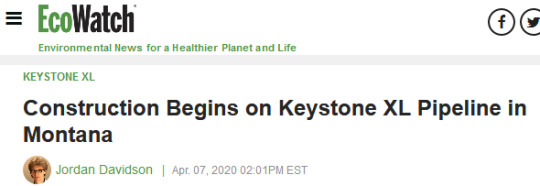
The construction that began yesterday [6 April 2020] involved around 100 workers in a remote border crossing between Montana and Canada, which is home to cattle ranches and wheat fields, according to a spokesperson from TC Energy, as the AP reported. The number of people involved in the construction is supposed to grow into the thousands as construction advances.
The government in Alberta is throwing in $1.1 billion to support construction of the pipeline, which will stretch 1,210 miles from the town of Hardisty, in Alberta, Canada, to Steele City, Nebraska, and will begin operating in 2023, as The Hill reported. The investment from Alberta's government will support construction through 2020 and triggered the surprise announcement that construction would begin. The pipeline is predicted to carry 830,00 barrels of crude every day for transfer to refineries and export terminals in the Gulf of Mexico.
Alberta will also guarantee a $6 billion loan to TC Energy.
However, as Bill McKibben, founder of 360.org, noted in The Guardian, the worker camps on the edge of Native American territory bring up memories of introduced epidemics that wiped out 90 percent of the Native American population.
"As Faith Spotted Eagle of the Yankton Sioux put it, 'this causes eerie memories for us [of] the infected smallpox blankets that were distributed to tribes intentionally,'" McKibben wrote.
--------

From Montana Public Radio:
At the Fort Peck Indian Reservation, which overlaps with Valley County, Chairman Floyd Azure of the Fort Peck Assiniboine & Sioux Tribes says he’s concerned about the possible risk of infection.
Attorney Matthew Campbell, who represents the Fort Belknap Indian Community in Montana and the Rosebud Sioux Tribe in South Dakota, says his clients have declared a state of emergency for the virus.
“Part of what we have submitted to the court is the concern about the gathering of these man camps with many people are working together and working on the pipelines and are near these tribal communities which are general at risk communities in general anyway," Campbell said.
Campbell represents the tribes in an ongoing lawsuit against TC Energy on the grounds that the pipeline would cross tribally-owned land and therefore violate their land rights.
-------

Keystone XL developers have so far planned for 11 worker camps in eastern Montana and western South Dakota, with some of the camps hosting up to 1,000 pipeline workers.
408 notes
·
View notes
Text
Teams: Manly's axing after show-stopping game

The NRL's form player of the year, Tom Trbojevic, is set to make his return for the Sea Eagles after missing round 23 with a facial injury.Last week, Trbojevic was ruled out as a precaution amid conflicting reports the superstar fullback had damaged a pre-existing facial fracture.
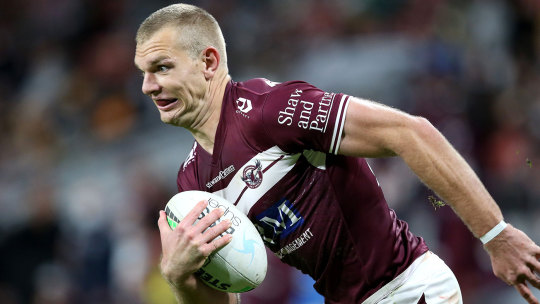
Tom Trbojevic (Getty)While serious injury concerns were put to bed, the Sea Eagles took no chance, resting their talisman who is set to make an emphatic return against the Bulldogs this week.Meanwhile, star teammate Moses Suli has been dropped from Des Hasler's squad despite putting up a stellar man of the match performance last week. Suli has been dropped to reserves, replaced by Brad Parker who slots straight into the centres.

Moses Suli. (Getty)Elsewhere, it's tough luck for the Tigers who have the unfortunate task of taking on the Panthers without standout star Adam Doueihi who has been sidelined with a knee injury.To make matters harder for Michael Maguire's men, star winger Brian To'o has made an early return from injury and will line up on Sunday evening.Meanwhile, the Raiders have dumped halfback Sam Williams after back-to-back critical losses to the Storm and Manly.

Adam Doueihi inspires the Tigers to a big win over the Knights. (Getty) (Getty)
NRL Teams
THURSDAYNewcastle Knights vs Gold Coast Titans, 7.50pm at Sunshine Coast StadiumKnights: 1. Kalyn Ponga 2. Enari Tuala 3. Kurt Mann 4. Bradman Best 5. Hymel Hunt 6. Jake Clifford 7. Mitchell Pearce 8. Sauaso Sue 9. Jayden Brailey 10. Jacob Saifiti 11. Tyson Frizell 12. Mitchell Barnett 13. Connor Watson 14. Brodie Jones 15. Chris Randall 16. Josh King 17. Jirah Momoisea 18. Jack Johns 19. Pasami Saulo 20. Simi Sasagi 21. Phoenix CrosslandTitans: 1. Jayden Campbell 2. Phillip Sami 3. Brian Kelly 4. Patrick Herbert 5. Corey Thompson 6. Tyrone Peachey 7. Jamal Fogarty 8. Jarrod Wallace 9. Mitch Rein 10. Tino Fa'asuamaleaui 11. Kevin Proctor 12. Beau Fermor 13. Sam McIntyre 14. Erin Clark 15. David Fifita 16. Moeaki Fotuaika 17. Jaimin Jolliffe 18. Toby Sexton 19. Sam Lisone 20. Esan Marsters 21. Greg MarzhewFRIDAYWarriors vs Canberra Raiders, 6pm at BB Print StadiumWarriors: 1. Reece Walsh 2. Dallin Watene-Zelezniak 3. Peta Hiku 4. Adam Pompey 5. Marcelo Montoya 6. Sean O'Sullivan 7. Chad Townsend 8. Addin Fonua-Blake 9. Wayde Egan 10. Matt Lodge 11. Josh Curran 12. Euan Aitken 13. Bayley Sironen 14. Kodi Nikorima 15. Bunty Afoa 16. Eliesa Katoa 17. Jazz Tevaga 18. Jamayne Taunoa-Brown 20. Rocco Berry 21. Kane Evans 22. Jack MurchieRaiders: 1. Jordan Rapana 2. Bailey Simonsson 3. Sebastian Kris 4. Matthew Timoko 5. Harley Smith-Shields 6. Jack Wighton 7. Matt Frawley 8. Josh Papali'i 9. Josh Hodgson 10. Joseph Tapine 11. Hudson Young 12. Elliott Whitehead 13. Ryan Sutton 14. Charnze Nicoll-Klokstad 15. Emre Guler 16. Corey Horsburgh 17. Siliva Havili 18. Sam Williams 19. Dunamis Lui 20. Semi Valemei 21. Trey MooneySydney Roosters vs South Sydney Rabbitohs, 7.55pm at Suncorp StadiumRoosters: 1. James Tedesco 2. Daniel Tupou 3. Lachlan Lam 4. Joseph Manu 5. Brad Abbey 6. Drew Hutchison 7. Sam Walker 8. Jared Waerea-Hargreaves 9. Sam Verrills 10. Siosiua Taukeiaho 11. Egan Butcher 12. Sitili Tupouniua 13. Isaac Liu 14. Ben Marschke 15. Naufahu Whyte 16. Fletcher Baker 17. Ben Thomas 18. Moala Graham-Taufa 19. Tukupa Hau Tapuha 20. Daniel Suluka-FifitaRabbitohs: 1. Latrell Mitchell 2. Alex Johnston 3. Dane Gagai 4. Campbell Graham 5. Jaxson Paulo 6. Cody Walker 7. Adam Reynolds 8. Mark Nicholls 9. Damien Cook 10. Thomas Burgess 11. Jaydn Su'A 12. Jai Arrow 13. Cameron Murray 14. Benji Marshall 15. Jacob Host 16. Tevita Tatola 17. Hame Sele 18. Liam Knight 19. Blake Taaffe 20. Peter Mamouzelos 21. Taane Milne
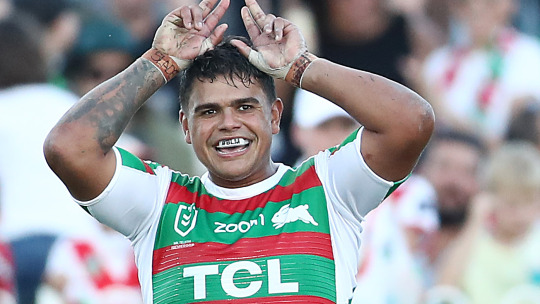
Latrell Mitchell (Getty)SATURDAYSt George Illawarra Dragons vs North Queensland Cowboys, 3pm at Browne ParkDragons: 1. Tyrell Sloan 2. Mathew Feagai 3. Jack Bird 4. Zac Lomax 5. Mikaele Ravalawa 6. Talatau Amone 7. Corey Norman 8. Blake Lawrie 9. Jayden Sullivan 10. Josh Mcguire 11. Billy Burns 12. Tariq Sims 13. Jack de Belin 14. Freddy Lussick 15. Tyrell Fuimaono 16. Daniel Alvaro 17. Jackson Ford 18. Kaide Ellis 19. Poasa Faamausili 20. Gerard Beale 21. Josh KerrCowboys: 1. Hamiso Tabuai-Fidow 2. Kyle Feldt 3. Valentine Holmes 4. Ben Hampton 5. Murray Taulagi 6. Scott Drinkwater 7. Tom Dearden 8. Jason Taumalolo 9. Reece Robson 10. Jordan McLean 11. Ben Condon 12. Heilum Luki 13. Reuben Cotter 14. Jake Granville 15. Jeremiah Nanai 16. Mitchell Dunn 17. Griffin Neame 18. Tom Gilbert 19. Daejarn Asi 20. Francis Molo 21. Laitia MoceidrekeCronulla Sharks vs Brisbane Broncos, 5.30pm at Suncorp StadiumSharks: 1. Will Kennedy 2. Sione Katoa 3. Connor Tracey 4. Jesse Ramien 5. Mawene Hiroti 6. Luke Metcalf 7. Braydon Trindall 8. Toby Rudolf 9. Blayke Brailey 10. Aaron Woods 11. Briton Nikora 12. Siosifa Talakai 13. Jack Williams 14. Matt Moylan 15. Braden Hamlin-Uele 16. Aiden Tolman 17. Teig Wilton 18. Kai O'Donnell 19. Billy Magoulias 20. Jenson Taumoepeau 21. Joniah LualuaBroncos: 1. Tesi Niu 2. Corey Oates 3. Selwyn Cobbo 4. Herbie Farnworth 5. Xavier Coates 6. Anthony Milford 7. Albert Kelly 8. Thomas Flegler 9. Jake Turpin 10. Payne Haas 11. Alex Glenn 12. Jordan Riki 13. Kobe Hetherington 14. Danny Levi 15. Rhys Kennedy 16. Ethan Bullemor 17. TC Robati 18. David Mead 19. Brendan Piakura 20. Cory Paix 21. Brodie CroftMelbourne Storm vs Parramatta Eels, 7.35pm at Suncorp StadiumStorm: 1. Ryan Papenhuyzen 2. Dean Ieremia 3. Reimis Smith 4. Justin Olam 5. Josh Addo-Carr 6. Cameron Munster 7. Jahrome Hughes 8. Jesse Bromwich 9. Brandon Smith 10. Christian Welch 11. Felise Kaufusi 12. Kenneath Bromwich 13. Chris Lewis 14. Harry Grant 15. Aaron Pene 16. Tom Eisenhuth 17. Nicholas Hynes 18. Tui Kamikamica 19. Isaac Lumelume 20. Tepai Moeroa 21. Marion SeveEels: 1. Clinton Gutherson 2. Haze Dunster 3. Viliami Penisini 4. Waqa Blake 5. Blake Ferguson 6. Dylan Brown 7. Mitchell Moses 8. Isaiah Papali'i 9. Joey Lussick 10. Junior Paulo 11. Shaun Lane 12. Marata Niukore 13. Nathan Brown 14. Ray Stone 15. Bryce Cartwright 16. Makahesi Makatoa 17. Keegan Hipgrave 18. Will Smith 19. Oregon Kaufusi 20. Sean Russell 21. Jakob Arthur
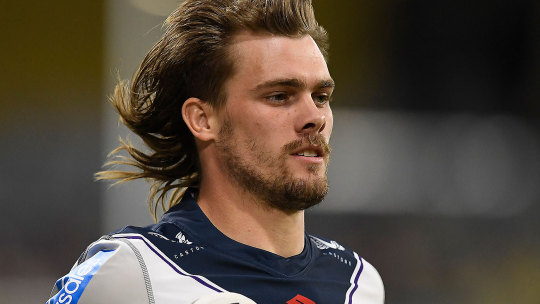
Ryan Papenhuyzen (Getty)SUNDAYManly Sea Eagles vs Canterbury-Bankstown Bulldogs, 1.50pm at Moreton Daily StadiumSea Eagles: 1. Tom Trbojevic 2. Jason Saab 3. Brad Parker 4. Morgan Harper 5. Reuben Garrick 6. Kieran Foran 7. Daly Cherry-Evans 8. Toafofoa Sipley 9. Lachlan Croker 10. Martin Taupau 11. Haumole Olakau'atu 12. Josh Schuster 13. Jake Trbojevic 14. Dylan Walker 15. Karl Lawton 16. Curtis Sironen 17. Josh Aloiai 18. Moses Suli 19. Cade Cust 20. Jack Gosiewski 21. Kurt De LuisBulldogs: 1. Nick Meaney 2. Corey Allan 3. Will Hopoate 4. Aaron Schoupp 5. Jayden Okunbor 6. Lachlan Lewis 7. Kyle Flanagan 8. Ava Seumanufagai 9. Bailey Biondi-Odo 10. Jack Hetherington 11. Matt Doorey 12. Joe Stimson 13. Josh Jackson 14. Brandon Wakeham 15. Ofahiki Ogden 16. Chris Patolo 17. Sione Katoa 19. Falakiko Manu 20. Jackson Topine 21. Jake Averillo 22. Watson HeletaPenrith Panthers vs Wests Tigers, 4.05pm at Moreton Daily StadiumPanthers: 1. Dylan Edwards 2. Stephen Crichton 3. Paul Momirovski 4. Matt Burton 5. Brian To'o 6. Jarome Luai 7. Nathan Cleary 8. Moses Leota 9. Apisai Koroisau 10. James Fisher-Harris 11. Viliame Kikau 12. Kurt Capewell 13. Isaah Yeo 14. Mitch Kenny 15. Scott Sorensen 16. Tevita Pangai Junior 17. Liam Martin 18. Izack Tago 19. Taylan May 20. Tyrone May 21. Charlie StainesTigers: 1. Moses Mbye 2. David Nofoaluma 3. Tommy Talau 4. Michael Chee-Kam 5. Ken Maumalo 6. Jock Madden 7. Luke Brooks 8. Thomas Mikaele 9. Jacob Liddle 10. Stefano Utoikamanu 11. Shawn Blore 12. Luciano Leilua 13. Alex Twal 14. Joe Ofahengaue 15. Jake Simpkin 16. Tom Amone 17. Alex Seyfarth 18. James Roberts 19. Billy Walters 20. Tukimihia Simpkins 21. Zac Cini
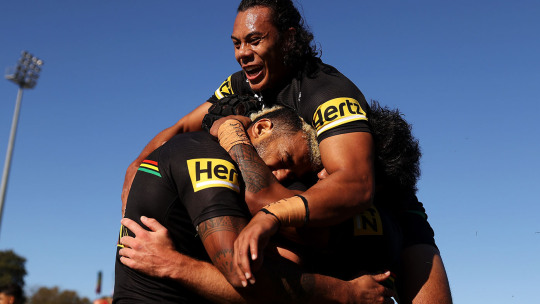
Jarome Luai of the Panthers jumps on the pack as Viliame Kikau of the Panthers celebrates a try. (Getty)For a daily dose of the best of the breaking news and exclusive content from Wide World of Sports, subscribe to our newsletter by clicking here! Read the full article
5 notes
·
View notes
Text
It looks like there aren't many great matches for your search
Tip: Try using words that might appear on the page you’re looking for. For example, "cake recipes" instead of "how to make a cake."
Need help? Check out other tips for searching on Google.
https://en.m.wikipedia.org › wiki
Web results
Roberta Cowell - Wikipedia
Roberta Elizabeth Marshall Cowell (8 April 1918 – 11 October 2011) was a British racing driver and Second World War fighter pilot. She was the first known British trans woman to undergo sex ...
Missing: garrison nato
https://en.m.wikipedia.org › wiki
Roberta Close - Wikipedia
Roberta Close is a Brazilian fashion model. She was the first transgender model to have posed for the Brazilian edition of Playboy. She has appeared on the catwalk for numerous fashion houses, ...
https://home.army.mil › Garrison
Equal Opportunity (EO) :: U.S. Army Garrison Benelux
Jul 24, 2019 — Army Directive (AD) 2016-35: Army Policy on Military Service of Transgender Soldiers ... in the DoD; TC 26-6: Commander's Equal Opportunity Handbook; ALARACT 075/2017 ...
Missing: nato roberta
https://www.history.navy.mil › library
Afghanistan - Silver Star Presented Francis L ... - Naval History and Heritage Command - Navy.mil
AT THE ARLEIGH & ROBERTA BURKE THEATER ... year assignment as the Garrison Engineer Mentor to the 209th Corps of the Afghan National Army attached to Regional Security Integration ...
Missing: transvestite | Must include: transvestite
https://dworakpeck.usc.edu › ...PDF
CURRICULUM VITAE - USC Suzanne Dworak-Peck School of Social Work - University ...

Headquarters, U.S. Army Medical Research and Materiel Command,. Fort Detrick, Maryland. 2004 - 2007 ... Military Suicides, NATO Human Factors and Medicine Panel. 2017. Gersoni Award ...
60 pages·495 KB
https://www.cgu.edu › 2017/01PDF
LIGHT ON THE DARKNESS - Claremont Graduate University

Matthew and Roberta Jenkins have proudly served as two of the university's strongest supporters ... Allied Force, NATO airstrikes that sought to stop ethnic cleansing in Kosovo. Marx later served ...
44 pages·4 MB
People also search for

Christine Jorgensen

Roberta Cowell's story
Roberta Cowell autobiography
Roberta Close antes e depois
https://clarksvillenow.com › local
Web results
Chamber hosts reception for garrison commander | ClarksvilleNow.com
Jul 26, 2017 — Colonel Kuchan recently took over as Garrison Commander at Fort Campbell after the retirement of Colonel ... But transgender troops are already serving openly in the military.
Missing: nato roberta
https://csis-website-prod.s3.amazonaws.com › ...PDF
Coping with Surprise in Great Power Conflicts - AWS

was dedicated to finding ways to sustain American prominence and prosperity as a force for good in ... served as NATO's deputy supreme allied commander in Europe until 2014, wrote a novel,.
154 pages·6 MB
https://www.wilsoncenter.org › ...PDF
NORTH AMERICAS - Wilson Center

Canadian Armed Forces. CAQ. Coalition Avenir Quebec ( Coalition for the Future of Quebec). CBC. Canadian Broadcasting Corporation. CBSA. Canada Border Services Agency. CDS. Chief of the ...
345 pages·2 MB
https://huggingface.co › vocab
The AI community building the future. - Hugging Face
git lfs install git clone https://huggingface.co/haisongzhang/roberta-tiny-cased # if you want to clone without large files – just their pointers # prepend your git ...
Related searches

April Ashley

Roberta Cowell book
Roberta Close Instagram
When was the first female-to-male surgery
First gender reassignment surgery
Harold Gillies
Page Navigation
More results
Footer Links
Valley View Heights, El Paso, TX - From your device
Terms
1 note
·
View note
Text
2020 Fics (so far)
Here’s my ao3 lineup so far!
The first thing I did in 2020 was finish my slow burn farmhand AU, TC. If you haven’t read it, I basically got inspired by RandL getting back in touch with their southern roots and got back in touch with mine. Maybe not a love story for the ages, but if you like pretending it’s summer out in the boonies, give it a read.*
Tennessee Clay
04 Jan 2020
Determined to make his last summer before college graduation meaningful, Link accepts a job as a farmhand one state over. What he doesn't realize is that he's going to have to work alongside the farmer's son- a mysterious, aloof man who wants nothing to do with Link.
Language: English Words: 68,572 Chapters: 30/30
Next I wrote something that I got the idea for when I was watching Bleak Creek live. Something about the way Rhett laughed after saying they were scolded for “tossin’ rocks”...
Tossin' Rocks
05 Jan 2020
The boys end up on the roof of Campbell University one day.
Language: English Words: 1,409 Chapters: 1/1
This is actually something I wrote most of last year, before I started TC. I wanted to write something current-day canon, but I wanted to take it from an angle I’d never seen before. I’d actually watched The Saint before writing the first draft and I wanted to title it Energy to finish the quote Rhett references, but my working title was too funny to scrap.
Here, in The Olive Garden Parking Lot?
07 Jan 2020
This time, the wives come out first.
Language: English Words: 4,275 Chapters: 1/1
17 notes
·
View notes
Note
L U Z E heheh
L: a quote from one of your fandoms which you absolutely adore already answered lol but another quote I rlly like is
See, what we call God depends upon our tribe, Clark Jo, 'cause God is tribal. God takes sides. No man in the sky intervened when I was a boy to deliver me from Daddy's fist and abominations. I figured out way back if God is all-powerful, He cannot be all good. And if He is all good, then He cannot be all-powerful. And neither can you be.
(if u don’t recognize this quote it’s from bvs aka the best superhero film ever made and u NEED to watch it asap)
U: favourite male characters? I would say max but he is a LESBIAN so ok others (this is abt to be a wall of text lmao)
chuck bartowski, johnny jaqobis, cyrus goodman and also tj, luke watkins, ravi chakrabarti and clive babineaux, alec hardison, logan echolls, michael cordero, gus fring, harry greenwood, koen west, waka nuku rau, dceu!clark kent and dceu!bruce wayne (I’m not familiar w like any tv show takes on either, not huge on other film versions of the chars that I’ve seen so Yes I specifically mean the dceu versions as of now lol), abed nadir, burton guster, tyrone johnson, beaumont rosewood, john constantine, cisco ramon, ray palmer, josh chan, cameron black, lionel higgins, sherlock holmes and marcus bell, declan harp, zeke and shaolin and the kipling brothers, miles finer and rakesh singh, thomas magnum and tc, chidi anagonye and jason mendoza, joe macmillan, tyrell wellick, hiro nakamura and ando masahashi and moinder suresh, wes gibbins, ezra bloom and richie evans, nathan campbell, ezekiel jones, micah lee, neal sampat, buck vu, ryan fletcher, xavier holliday and timothy finger and hank barkley, jamal turner, harvey kinkle, emilio acosta, ozzie graham, damon and lil papi evangelista, malcolm bright, james valdez and pote galvez and alonzo loya, magnus bane and simon lewis and luke garroway, alan zaveri, bow from she-ra, david rose and patrick brewer, eric effiong and jackson marchetti, lito rodriguez and hernando fuentes and wolfgang bogdanow and capheus onyango and rajan rasal and jonas maliki (yes every man on this show deserves rights except will and joaquin and whispers and wolfgang’s vile family and the transphobic dicks nomi interacted with), miggy park, mateo liwanag and garrett mcneil, fernando carvalho, bernard lowe and teddy flood and akecheta, xavier dolls............... I’m sure there are more but these are some that jumped out lol
(did I go thru my list of tv shows I’ve watched bc I was blanking after like my first 5? you bet! my ocd compels me to be Thorough)
Z: a fandom you would love to sit down, and give a lesson on manners and personal space? uh Literally 99% of fandoms but truly rnm bc HOLY SHIT m*lex corner of fandom is genuinely so entitled and invasive and will not stop harassing anyone who talks about the shitty treatment towards the woc in the show and are incredibly dismissive of the woc who watch the show and claim anyone not obsessed w m*lex is homophobic Actually as if the vast majority of this fandom isn’t sapphics............. just burn the whole fandom down tbh it’s been trash from the start bc so many folks have been vile to maria from day 1, but they just keep adding other shitty behavior on top of that so I haven’t gone into the tags at all for a little over a month and I doubt I’ll return to them
E: a character you think you’re the most like? I am max and max is me. no but ok I talked abt this a bunch on my previous blog lol. like he’s v empathetic and caring and the way he just assumes everything is his fault even if it’s not even something he’s involved in like OOF. and the way he loves so deeply and is always trying his best to prioritize the ppl he cares about over himself and ugh just. we are the Same.
send me letters
1 note
·
View note